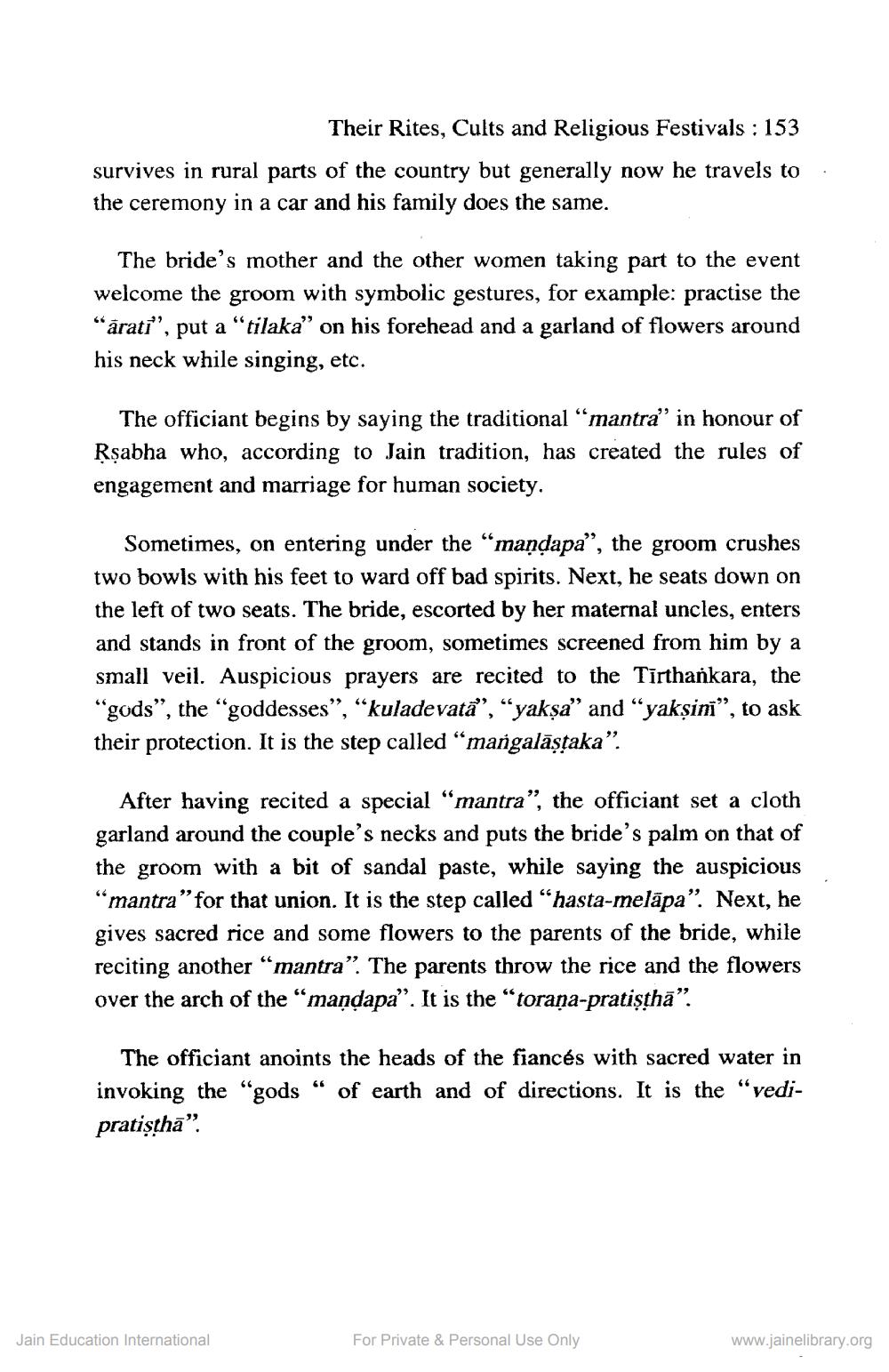________________
Their Rites, Cults and Religious Festivals : 153 survives in rural parts of the country but generally now he travels to the ceremony in a car and his family does the same.
.
The bride's mother and the other women taking part to the event welcome the groom with symbolic gestures, for example: practise the “arati", put a "tilaka” on his forehead and a garland of flowers around his neck while singing, etc.
The officiant begins by saying the traditional “mantra” in honour of Rşabha who, according to Jain tradition, has created the rules of engagement and marriage for human society.
Sometimes, on entering under the "mandapa”, the groom crushes two bowls with his feet to ward off bad spirits. Next, he seats down on the left of two seats. The bride, escorted by her maternal uncles, enters and stands in front of the groom, sometimes screened from him by a small veil. Auspicious prayers are recited to the Tīrthankara, the "gods”, the “goddesses”, “kuladevată”, “yakşa” and “yaksinī”, to ask their protection. It is the step called "mangalāştaka".
After having recited a special “mantra”, the officiant set a cloth garland around the couple's necks and puts the bride's palm on that of the groom with a bit of sandal paste, while saying the auspicious “mantra” for that union. It is the step called “hasta-melāpa”. Next, he gives sacred rice and some flowers to the parents of the bride, while reciting another “mantra”. The parents throw the rice and the flowers over the arch of the “mandapa”. It is the "torana-pratisthā”.
The officiant anoints the heads of the fiancés with sacred water in invoking the "gods “ of earth and of directions. It is the “vedipratisthā".
Jain Education International
For Private & Personal Use Only
www.jainelibrary.org




